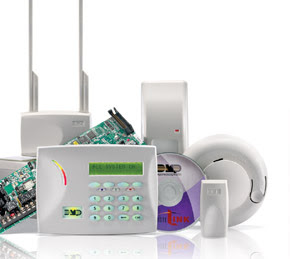I spent some time with STENTOFON last week on a public safety project I am working on and was very impressed with their IP audio technology and the new IP solutions that will be released at ISC West in April. I am sure many of you are familiar with this solution because of their chemical-resistant stations that have an anti-bacterial surface and are specially designed for hospital operating rooms and other clean areas. To meet the requirements of these environments, the stations provide loud-speaking, hands free communication from any location in the room. Speaking hands free is a great boon to healthcare personnel as it allows them to speak and listen even while occupied with other tasks. If not here is some more information about the company and the solutions.
STENTOFON Critical Communications over IP or (CCoIP®) has a large high contrast displays with backlight for exceptional readability. Due to its IP functionality, these stations have no geographical limitations and offer remote software upgrades, configuration and monitoring.
In the reception areas which are a vital information point for visitors, patients and staff. There can be several of these in large hospitals and are important communication hubs in the building. The reception informs the doctor when a new patient has arrived. It also provides information to family and friends of the patient. In case of an emergency, the reception has to be able to get hold of the right people as soon as possible, and if necessary, broadcast messages throughout the hospital.
STENTOFON offers products that are particularly suited to these kinds of tasks. Their Control Room Master stations can be extended with up to 100 direct access keys and integrated with PA equipment, wireless DECT phones, cell phones, pagers, and radio. The station is available both in analogue and IP versions and can be equipped with a gooseneck microphone and a handset or in a Softclient version.
Help points
Help and/or emergency points are integral to any critical communication system in hospitals. They are usually installed throughout the corridors, the emergency room, the car park, or at the entrance, etc. Help or assistance is just one button push away and calls can be placed directly to the security desk. CCTV cameras can be automatically triggered when a corresponding help point is used so the guards can also see what is going on.
The STENTOFON analogue and IP Substations are typically used as communication, information or emergency points, and offer the following features:
- Priority of call
- Two-way, hands free (IP) communication
- High Power Lamp/Strobe flashes when activated for emergencies
- Connection to external IP video camera
- Superb wideband audio quality
- Remote software upgrade, configuration and monitoring
- Tamper alarm for additional system security
Additionally, your security guards may need to ensure the safety of the staff and patients and to prevent the theft of expensive equipment. STENTOFON Control Room Master Station proves invaluable as it allows the guards to address the PA system in case of an emergency.
Restricted areas
There are numerous restricted areas in hospitals that need to be monitored closely. A hospital relies on an advanced access control system to manage these areas. STENTOFON equipment can be easily integrated with the access control system. Restricted entrances to the hospitals are provided with intercom stations for extra security.
Parking facilities
The same solution can be used in the parking facility. Big hospitals usually have several parking facilities for visitors and staff. In order to manage all these, a smart, interactive parking solution is needed. STENTOFON gives a voice to the parking facility with the installation of emergency stanchions, help points, etc.
CCoIP on a backwards compatible system
When STENTOFON introduces new technologies into the market, they will always make sure that these new technologies are compatible with the older systems. CCoIP, or Critical communication over IP, is a concept that stands for a communication system running only on the IP standard. Our latest intercom stations are entirely IP based which means they support power over Ethernet and use the LAN to connect the server.
Their AlphaCom server supports IP technology but can nevertheless integrate with old intercom products such as TouchLine and Ringmaster. They offer a wide range of intercom stations based on either analog or IP technology.
Audio quality
Their stations offer the highest audio quality available in intercom. Their IP stations go up to 7 kHz and our analog stations can go twice as high.
Distance is no longer an issue
Thanks to IP, exchanges located all over a wide area can be connected through fiber optics, coax or even the internet, this technology is called AlphaNet. The AlphaCom exchange has a wide of monitoring and logging features such as (Syslog, Web, SMTP, SMS…) all these features can be set up remotely and crucial logging information is distributed in a matter of seconds to anyone who needs to receive this info, regardless of the distance.
Softclient
The STENTOFON Softclient, the software that will turn your PC into a STENTOFON intercom. Access a wide range of critical communication services, including intercom, public address, radio and telephony. The STENTOFON Softclient can be operated with mouse, from the PC keyboard and with touch screens.
The STENTOFON Softclient supports all features of the AlphaCom servers. It supports HD Voice and Active Noise cancellation.
Some typical areas to use the Softclient are:
- Control room application integrating intercom
- Reception services handling door calls
- People on the move wanting access to the AlphaCom XE services via their laptop
I found this solution an excellent situational awareness tool for management in an emergency and for every day secure communications.
Demonstration
To have a demonstration of this technology or to learn more about STENTOFON, just drop me an email or call me at (508) 453-2731.











